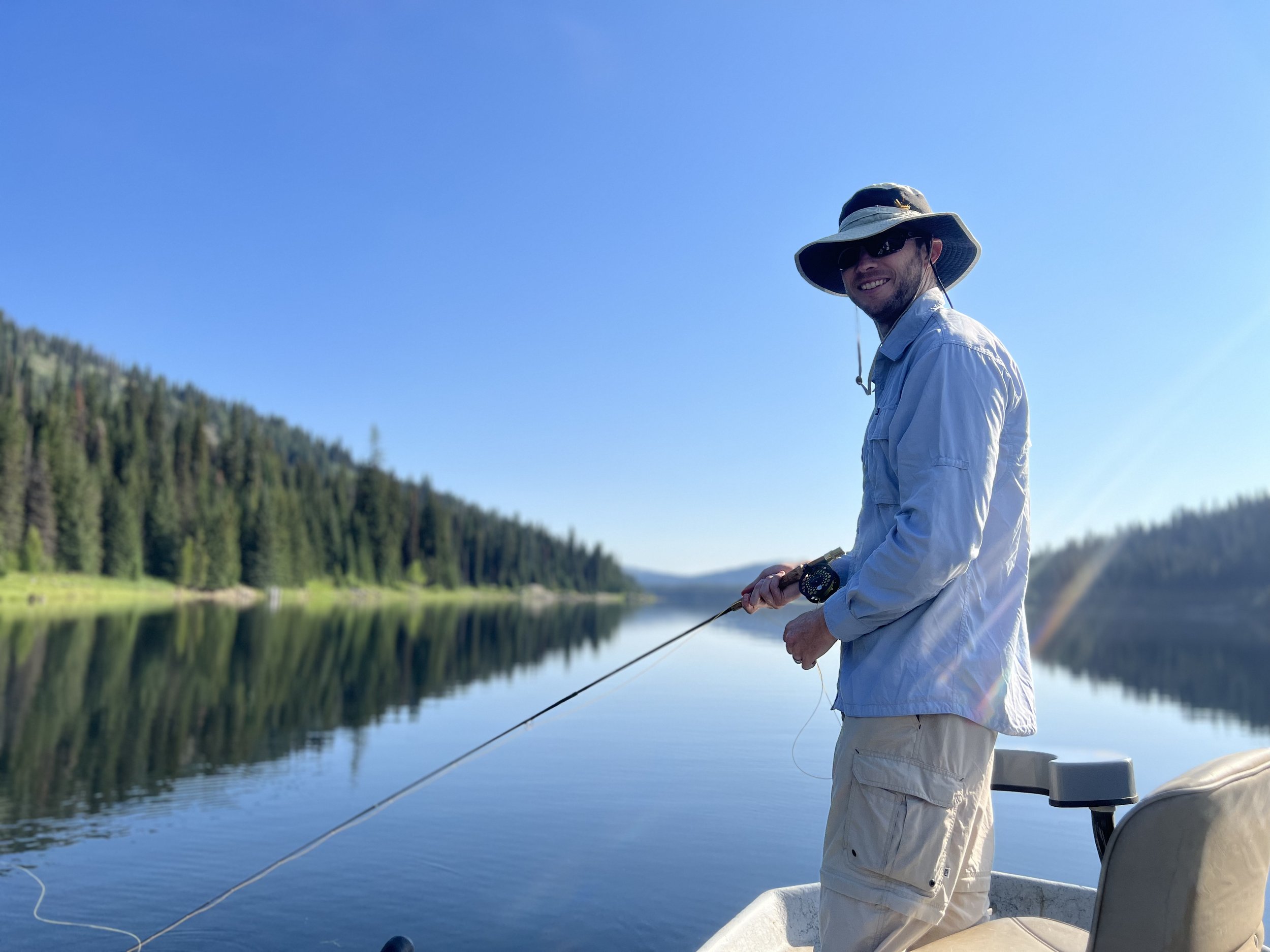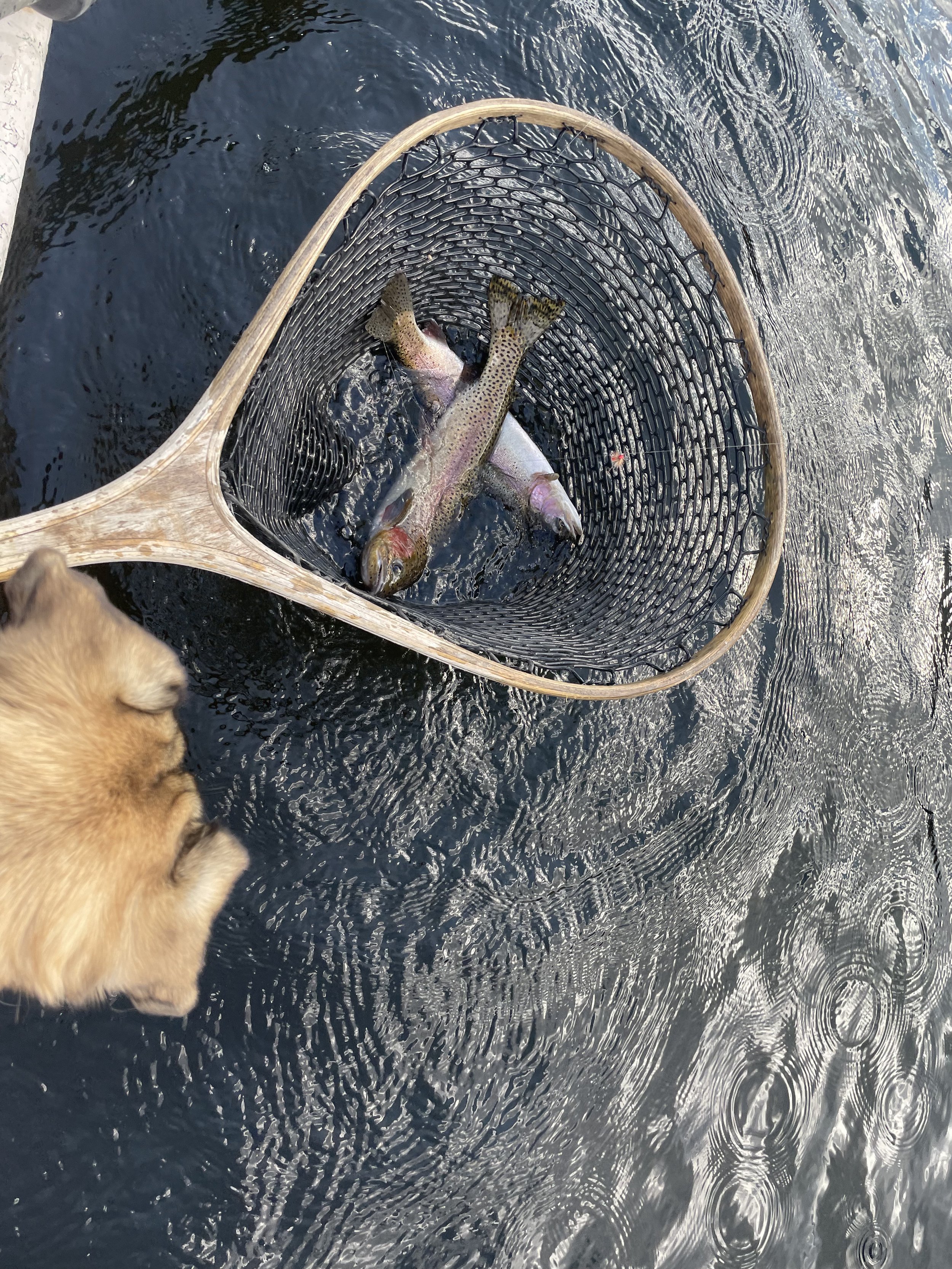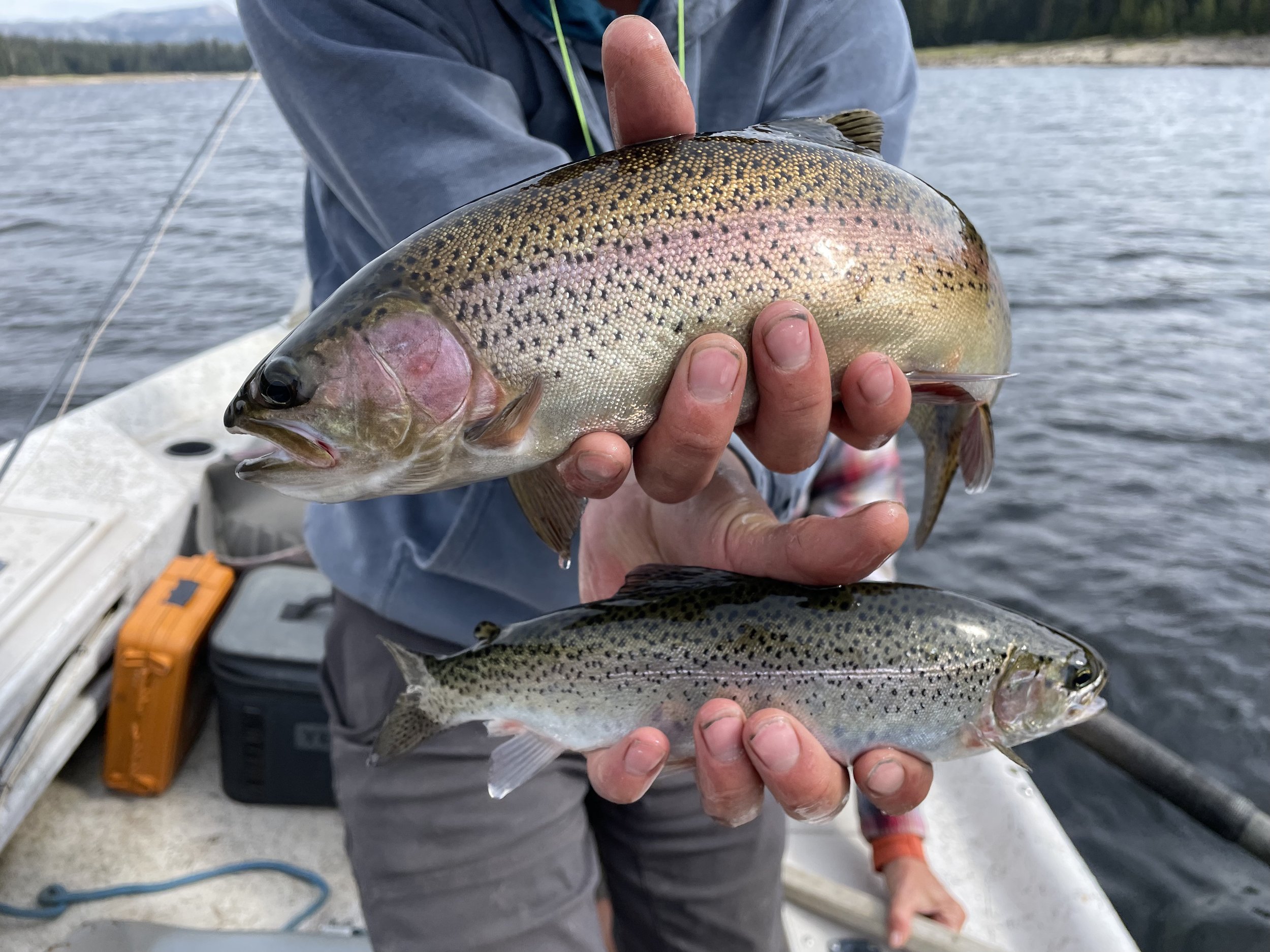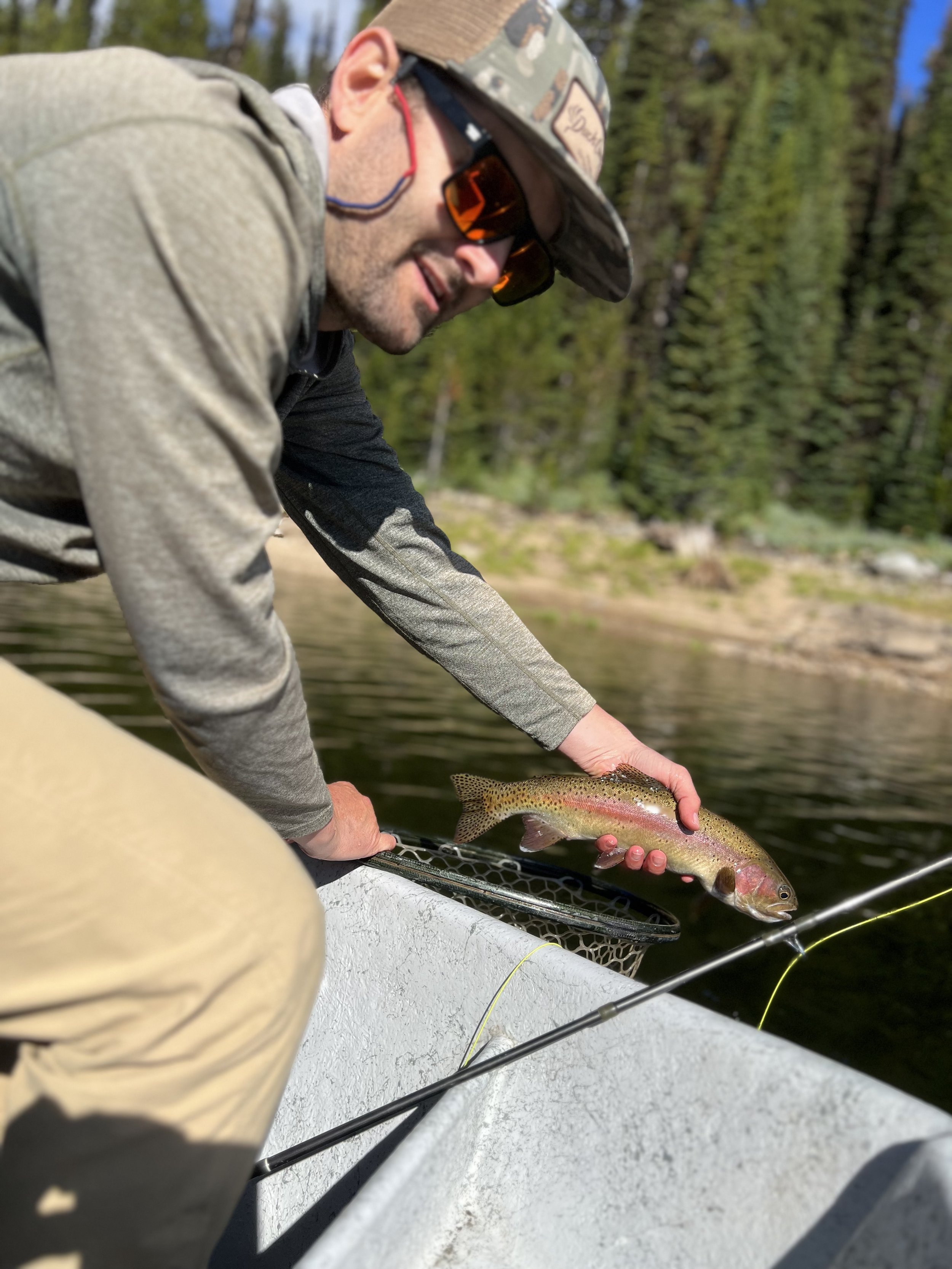McCall Guiding one: Brundage
My second year of guiding in McCall Idaho was incredible. It’s a very unique fishery. The outfitter I work for, Drift West, has permits for several different areas, so I’m not locked in to fishing the same stretch of a river every day. I haven’t counted, but there are probably thirty lakes that we can legally take clients to, but only four or five of which you can drive to.
McCall is a mountain resort town on a lake that is popular with boaters in the summer, and skiers and snowboarders in the winter. There are two distinct seasons for the town, and when it’s not high season the place is pretty empty. McCall is high up in the Payette river drainage in central Idaho, and is just south of the Salmon River.
On my days off I love exploring the mountains. I’ll find lakes on a map and find my way up to them, most of the time it’s a decent hike but you can drive to a handful of them. Idaho Fish And Game has introduced trout to pretty much all of the mountain lakes around there so I’m usually romping around the forest with a fly rod, my sling bag, and a GPS chasing down the road less traveled.
Most of my trips with clients are to Brundage Reservoir, a decent cutthroat and rainbow trout fishery at 6227 feet of elevation. This is mostly because it is easy to get to, you don’t have to hike in and can fish from a drift boat. In the spring, there's a solid streamer bite as baitfish as the larger fish stage on the drop-off, waiting to spawn in tributaries and ambush any minnows that come too close. Chironomids, backswimmers, and scuds are also active, offering the option to nymph if the fish aren't keen on chasing streamers or if presenting the flies proves challenging
Summer kicks off with an awesome calibaitis hatch. some days it can be short and some days it’s longer, but the spinner fall in the morning is awesome. Starting a day by head hunting cruising fish eating size 10 mayflies is pretty dang cool. Terrestrials play a significant role, with ants dominating, occasional hopper eaters on windy days, and fish picking up the occasional beetle. Dry-dropper rigs are usually the go-to in the summer.
Temperatures fluctuate wildly at this elevation, and this has a big effect on the fish. The surface layer of the water warms fairly quickly and there will be several feet of warm water on the surface of the lake. Fish suspend in this lake, and on days when there isn’t consistent surface action we need to determine how deep the fish are holding. I’m always carrying two different sinking lines on the boat. The first is a sweep line that we use to search for fish. It sinks in a “U” shape that brings your flies from the surface down to 20 feet, and then back up through the column as you retrieve. The other is a triple-density full-sinking line. When we find how deep the fish holding are we can adjust our approach to get flies in the zone. It has been a great learning experience.
More often than not, we get to fish a dry dropper and target fish cruising the shallows looking for terrestrials. These are some of the most fun days with clients, most of whom have never fly fished before or are just starting out.
Late summer there is a flying ant hatch that is absolutely insane. We have had plenty of double digit half-day trips in August and September, but the real fun happens right before dark. We don’t book afternoon trips on Brundage because the wind almost always picks up when the sun gets high overhead. A good sustained wind makes rowing a drift boat across Brundage lake somewhere between torturous and terrifying. In the afternoon these flying ants get thrown into the lake by the thousands and fish swim in to feast just a few feet from shore when the light starts to die. It’s pretty crazy! I’d recommend you break out your spring creek skills for this. use a long leader, stay super low and slow when moving, and don’t throw a shadow onto the water if possible.





